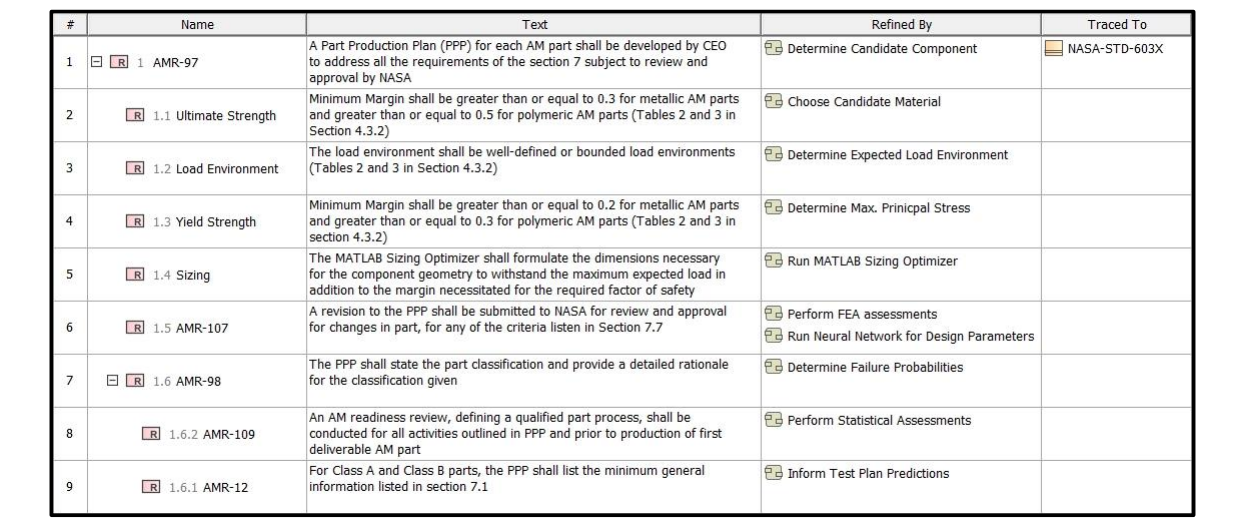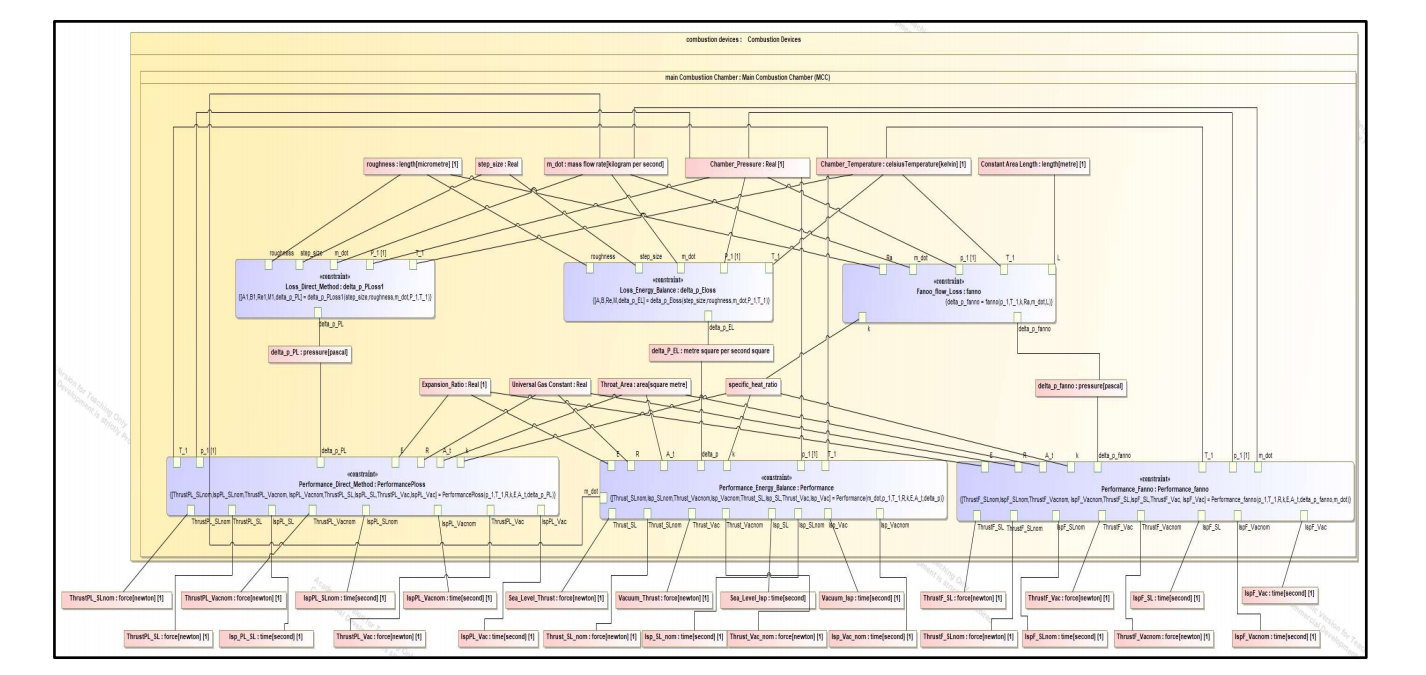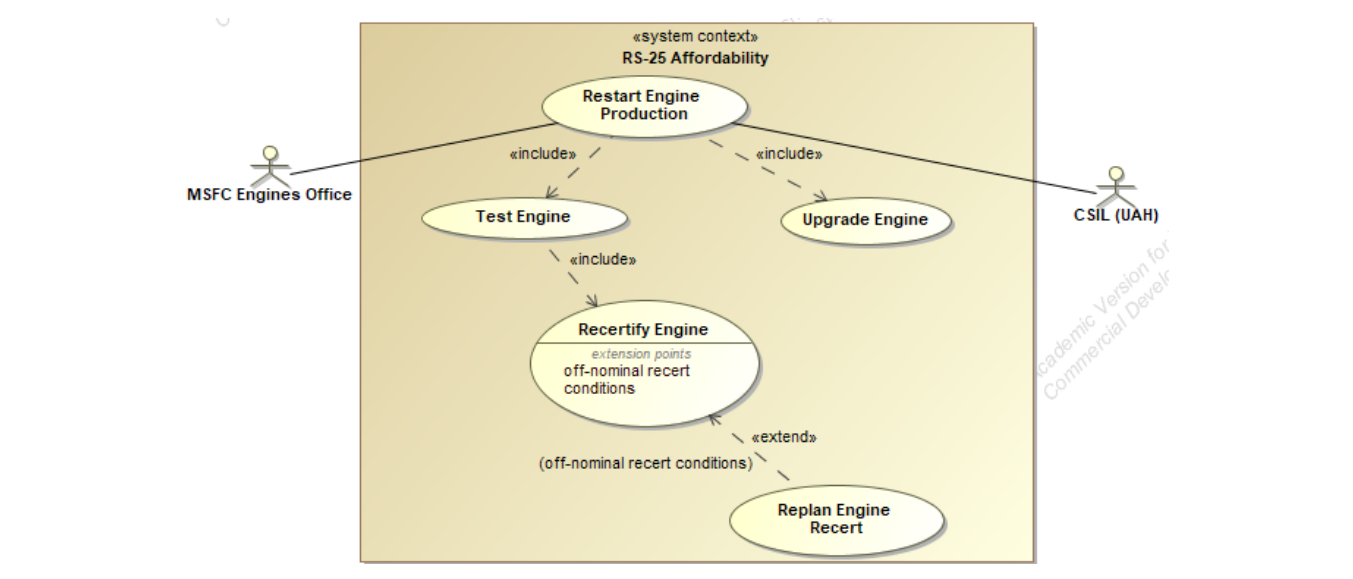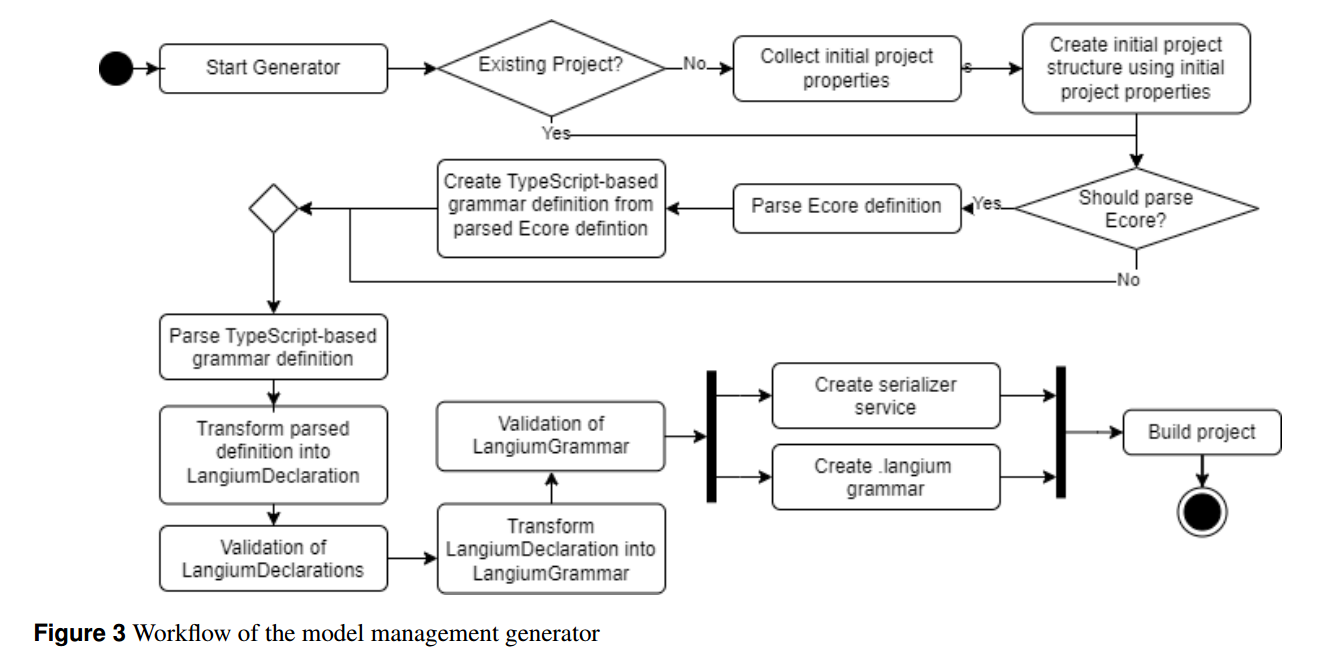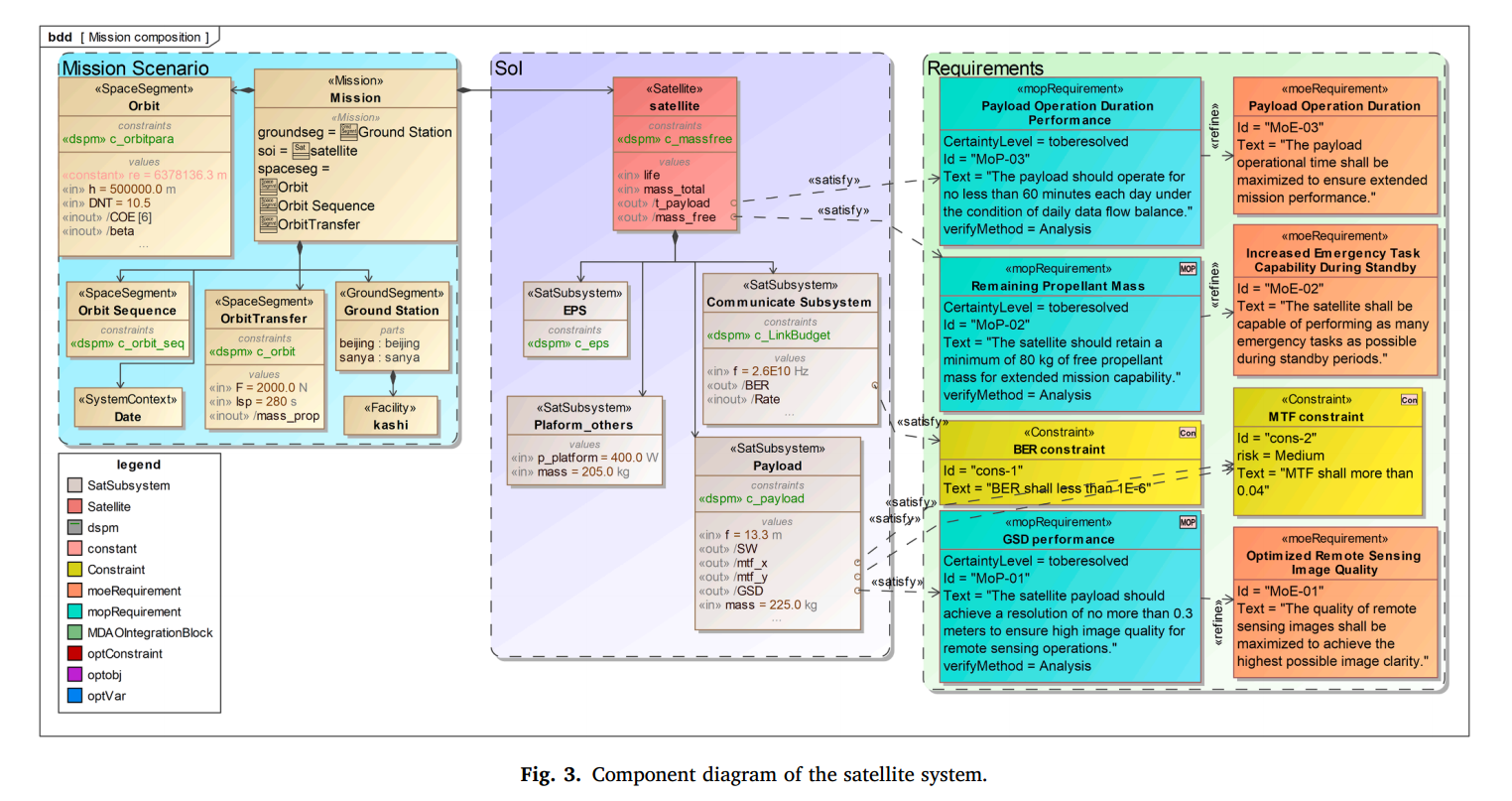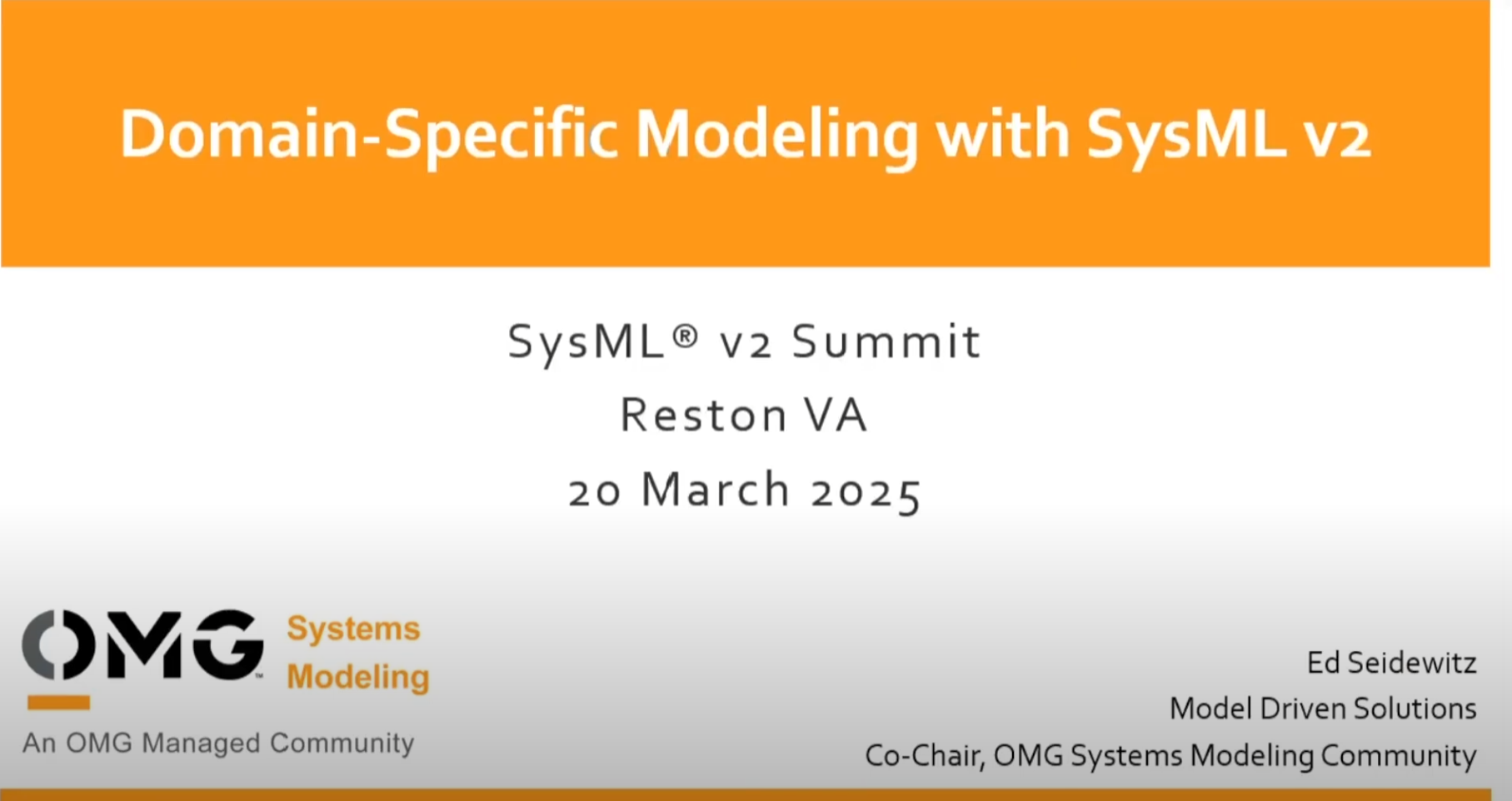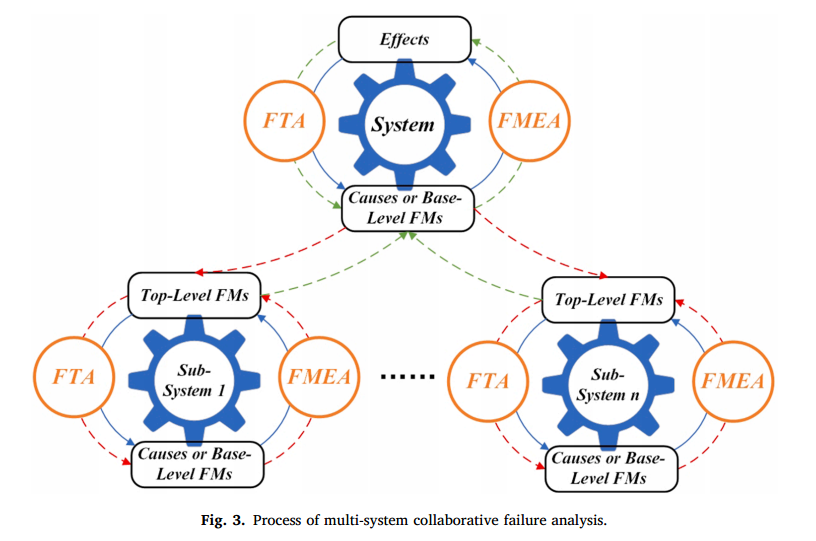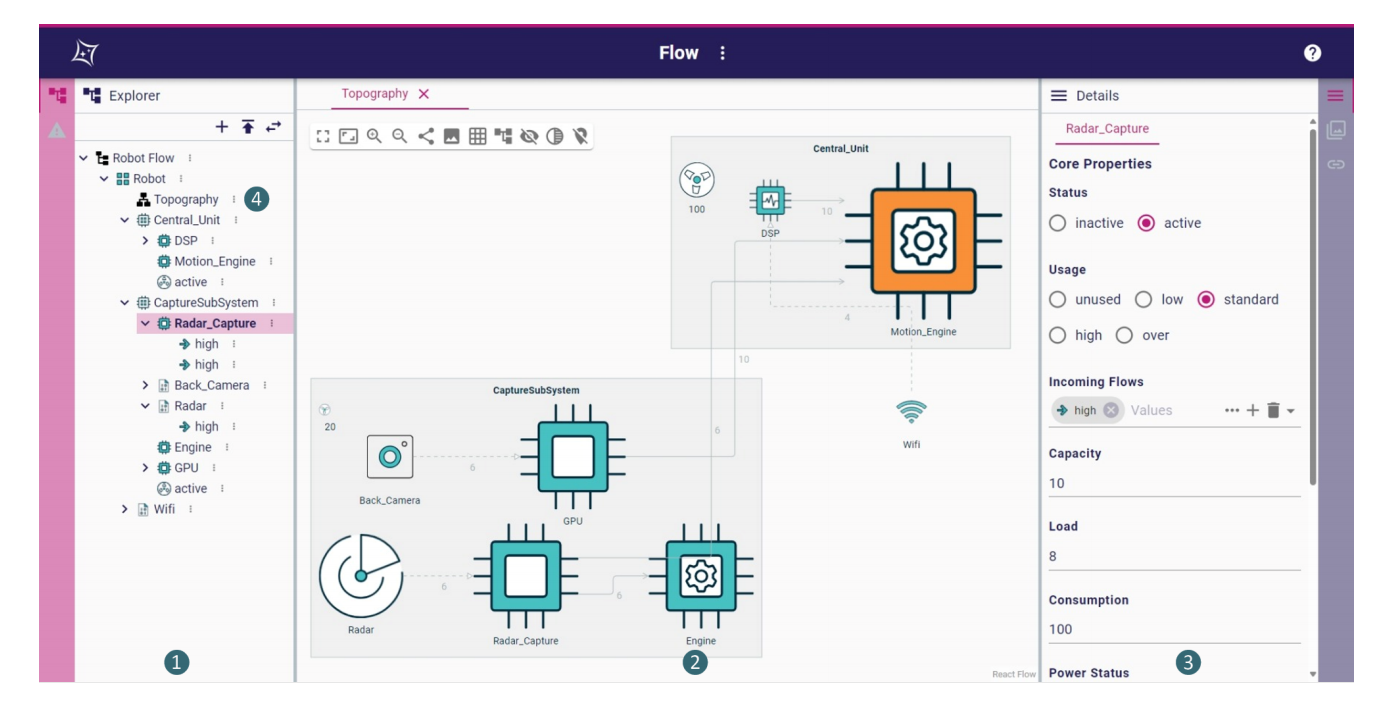笔记:Design ontology for cognitive thread supporting traceability management in model-based systems engineering
作者来自王国新和鲁金直团队。
Abstraction
Industrial information integration engineering (IIIE) is an interdisciplinary field to facilitate the industrial information integration process. In the age of complex and large-scale systems, model-based systems engineering (MBSE) is widely adopted in industry to support IIIE. Traceability management is considered the foundation of information management in MBSE. However, a lack of integration between stakeholders, development processes, and models can decrease the effectiveness and efficiency of the system development. A modified MBSE toolchain prototype has been developed to implement traceability management; however, a lack of formal and structured specifications makes it difficult to describe the complex topology in traceability management scenarios using this MBSE toolchain, such as creating traceability between heterogeneous models, which leads to poor reusability of this MBSE toolchain in other traceability management scenarios. To formalize traceability management scenarios using the MBSE toolchain, a cognitive thread (CT) ontology is developed in this study. The CT ontology is a specification expressing the information of stakeholders, models, and development processes for traceability management, providing the cognition capability to analyze the interrelationships between them. Based on the implementation of the modified MBSE toolchain, the concepts and interrelationships in the CT ontology are identified. The CT ontology is designed to develop the MBSE toolchain prototype for building, managing, and analyzing traceability in various traceability management scenarios. A case study of an adaptive cruise control system design is used to evaluate the completeness of the CT ontology through qualitative and quantitative analyses. The results demonstrate that the proposed CT ontology formalizes the information related to traceability management while using the proposed MBSE toolchain and can also be used in common traceability management scenarios to design other complex engineered systems.
Introduction
Industrial information integration engineering (IIIE)工业信息集成工程的概念。Digital Thread (DT)数字线程被认为是实现MBSE的下一个信息管理和集成范例。它可以看做是将产品生命周期的各个阶段产生的信息链接到决策的框架中[10],信息的可追溯性管理就显得很重要。
可追溯性管理的问题:可追溯性管理场景的形式化应该是实现功能的先决条件;应妥善管理和分析模型与数据、开发过程与利益攸关者之间的依赖关系。
本文的主要贡献:设计了一个认知线程本体Cognitive thread (CT) ontology,与其他方法相比,CT本体可以为追溯性的构建和分析过程提供语义描述。CT概念参考[19]。具体特点:
- (1) 将利益相关者、开发过程和系统工件之间的概念和相互关系形式化;
- (2) 提供基于预定义推理规则的认知能力。这些规则是基于利益相关者、开发过程和系统工件之间的相互关系制定的。认知能力可帮助利益相关者分析和理解协同设计中开发过程与模型和数据之间的复杂依赖关系,从而选择最佳设计。
在先前的一项研究 [20] 中,开发了一个 MBSE 工具链来支持协同设计。为了实现可追溯性管理,我们改进了此工具链作为 CT 本体形式化的基础,其中包括以下四个方面:
- (1) 系统工件的开放生命周期协作服务 (OSLC) 服务,例如领域特定建模 (DSM)、数据等;
- (2) 从 DSM 模型生成的基于 Web 的流程管理系统 (WPMS);
- (3) 统一身份验证系统;
- (4) OSLC 服务管理系统 (OSMS)。基于MBSE工具链的实现,识别了CT本体中的概念和相互关系,并以自适应巡航控制(ACC)系统设计的MBSE工具链为例,通过定性和定量的测量,评估了CT本体的完备性。
Related Work
Concept and state of the art of traceability management
The IEEE standard glossary of software engineering terminology defines traceability as the “degree to which a relationship can be established between two or more products of the development process” [30].
尽管在 MBSE 领域中,对可追溯性或可追溯性管理尚无统一的定义,但用于开发工程系统的可追溯性概念与软件工程中的可追溯性概念类似。The International Council on Systems Engineering (INCOSE) defines traceability in the MBSE field as “a discernible association between two or more logical entities such as requirements, system elements, verifications, or tasks”[32].
- 设计结构矩阵式可追溯性管理的最常用方法,但依赖额外的工具集。
- 模型转换是另一种方法,但大部分仅支持单向转换。(Guo等[41]设计了代码生成语言语法来实现MBSE与Simulink模型之间的可追溯性。Kharrat等[42]扩展了系统建模语言(SysML)配置文件,设计了一种模型转换方法来实现SysML与计算机辅助设计(CAD)模型之间的可追溯性。)
- 一些DSM工具链被视为是潜在解决方案。DSM 是一种工程方法,通过模型和一组形式化元模型来描述特定领域系统的信息。 这些工具链促进了不同领域模型之间的可追溯性。在本研究中,我们专注于 MBSE 工具链开发以支持可追溯性管理。
Ontology design for traceability management in MBSE
本体是指对象的类型及其属性和关系,它们代表了领域特定知识。在MBSE实践中,本体用于形式化系统开发和工件的系统信息。由于工程系统的固有特性,各种设计活动和利益相关者之间的迭代和交互也增加了产品实现过程的复杂性。(信息不全且混乱)
Cognitive thread for traceability management
数字线程的概念来自F35战斗机[58] [59]。
T. D. West et al [60] considered it as “a framework for merging the conceptual models of the system with the discipline-specific engineering models of various system elements”.
最近,研究人员试图利用语义技术增强 DT 的认知能力。下一代 DT 的范式被提议为 CT [19],它是一种具有增强语义能力的 DT,可以形式化模型与数据、开发过程和组织之间的相互关系。还有一些其他研究利用知识图谱用于描述语义间的拓扑关系。
Summary
几个动机:
- 为了形式化MBSE工具链,应开发描述MBSE工具链本身的本体模型。
- 工业界和学术界目标不同,本体还需要支持过程管理和工具操作。
- 使用CT能增强知识表达能力,现有方法没有在模型领域的分析。
Research design
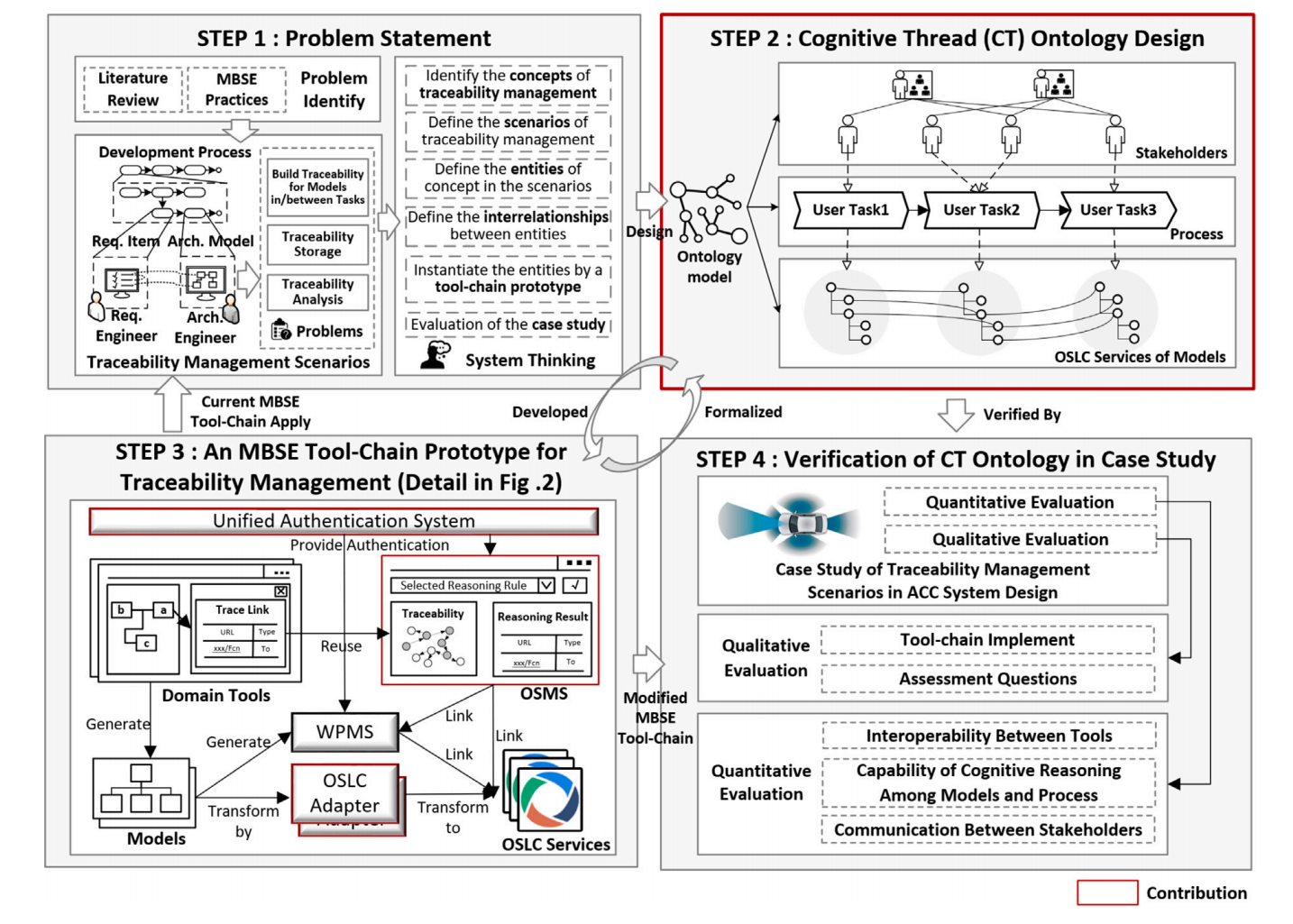
如图所示,第一步确定可追溯性管理场景;第二步,采用系统思维支持CT本体设计,解决工具链中的问题;第三步基于CT本体,修改当前的MBSE工具链以支持可追溯性管理场景;第四步,通过ACC系统设计案例,对原型进行评估。
Problem statement
在[20] [51]中开发了航空发动机仿真案例。利益相关者使用 DSM 模型来形式化开发流程和系统工件。 然后,将 DSM 模型转换为一个 WPMS,以部署技术资源并在 Simulink 中为不同的利益相关者实现自动联合仿真。本研究的步骤:
- 定义追溯性和追溯性管理的概念。[19]
- 定义场景。
- 定义场景相关实体。
- 定义实体之间的相互关系。
- 使用工具链实例化。
- 案例研究评估。
Prototype strategy for cognitive thread ontology design

如图所示,(a)用Excel提取需求,用MetaGraph和KARMA体系建模,使用代码生成器将DSM模型转换为本体,基于此联合Simulink进行仿真。(b)开发OSLC适配器,通过特定的映射规则将数据转换为相应OSLC服务。(c)编译器加载DSM模型中的流程模型以生成WPMS。(d)统一身份验证系统提供数据访问控制。(e)最后,开发OSMS(Neo4j)来存储和分析WPMS中OSLC服务和开发流程之间的追溯性。
Evaluation based on case study
提出了一个ACC系统设计案例,验证工具链的可行性与有效性。
(1)工具链原型开发:定义了4个指标。
(2)评估问题分析:提出了7个问题。
定量方法方面,参考SPIRIT框架[68]分析三个方面:模型互操作性、开发流程利益攸关者之间的沟通程度、追溯认知推理分析的能力。
Ontology of cognitive thread for traceability management in MBSE

本节介绍CT本体的具体内容,对应第一个图的第二步。
Ontology formalizing models

本节主要关注模型信息。在提出的 MBSE 工具链中,结构化需求文档被视为非正式模型,DSM 模型是描述性模型,Simulink 模型是分析性模型。DSM 模型是基于 GOPPRR-E 建模方法生成的。基于 OSLC 核心规范[22]开发了需求表、DSM 模型和 Simulink 模型的 OSLC 服务,以支持数据集成和互操作。为了描述OSLC服务,使用OWL语言进行形式化[71]。论文讲述了以上三者之间的映射方法,具体方式如图4左侧描述。
Ontology formalizing development process
本节主要关注开发过程的结构信息。采用的是BPMN开发流程。
Ontology formalizing stakeholders
本节主要关注的是利益攸关者的结构信息。
Ontology formalizing scenarios of traceability management
在已知模型、过程和利益攸关者信息后,本节关注可追溯性管理。包括四个部分:OSLC模型间追溯管理、OSLC模型与过程模型间追溯管理、OSLC模型与利益攸关者间追溯管理、过程模型与利益攸关者间追溯管理。
Case study
Scenario definition
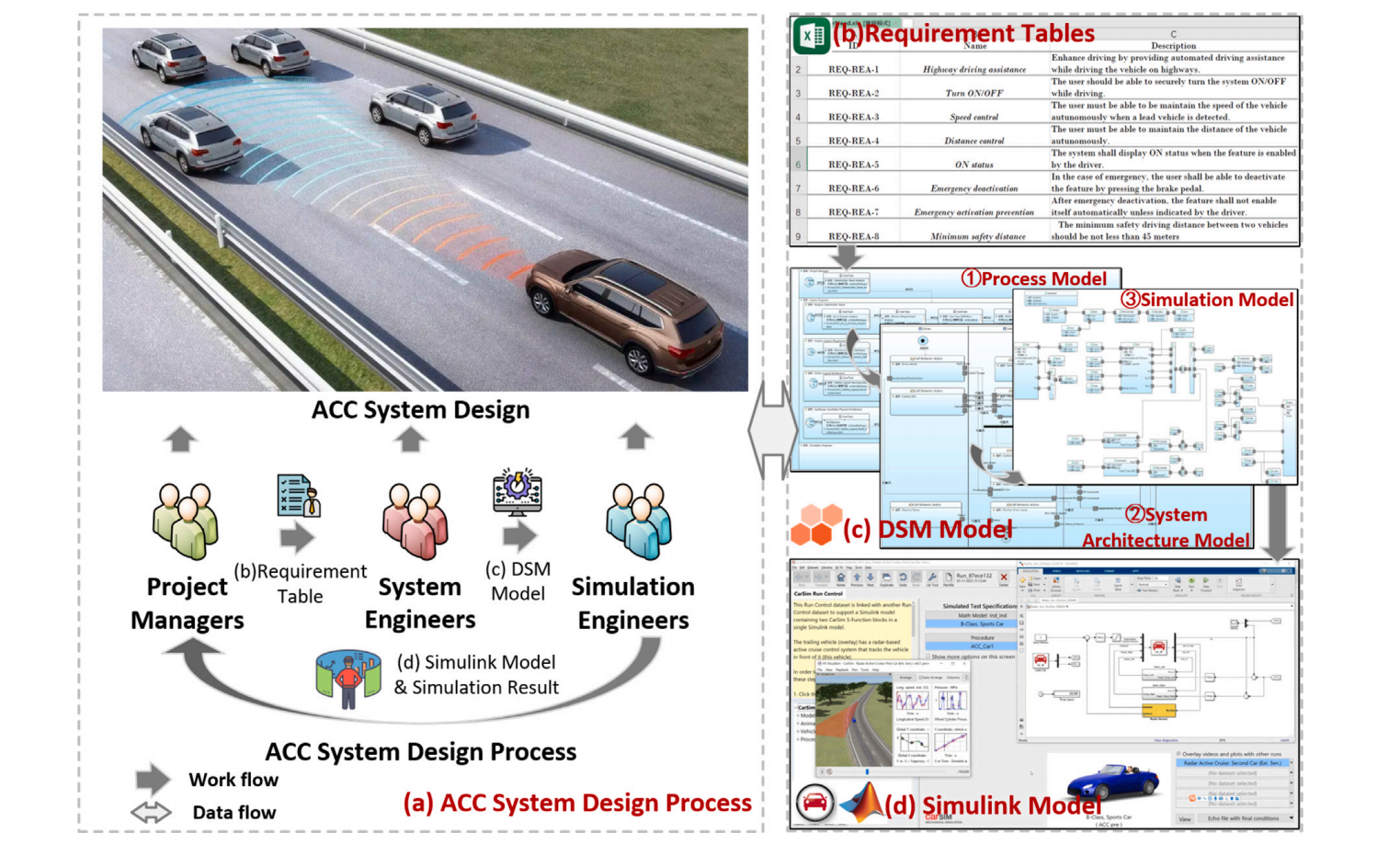
ACC是一种基于车辆的外部行驶环境,如前方车辆的速度和距离,来适应常规控制的避碰系统。为了验证所提出的CT本体的完整性,以ACC系统设计为例对MBSE工具链原型进行了评估。案例如图5所示。
Models and data supporting ACC system design
介绍了DSM的元模型组成和DSM模型在MetaGraph软件中的对应效果。建模方法用的是OOSEM[26]。用CarSim做了一个Simulink ACC FMU模型。OSCL服务可以触发Simulink运行并获取Simulink中的数据。
OSMS supporting traceability construction and analysis

图10展示了可追溯管理软件OSMS的架构。
- 10(a)中:利益攸关者可以通过OSLC服务绑定到WPMS的工作任务来操纵设计模型。例如,WPMS中的涉众需求定义工作任务链接到在Excel中查询需求项的相关OSLC服务。在WPMS中,需求工程师操纵OSLC服务来修改Excel表格中的涉众需求,例如将最小安全驾驶距离从35米更改为40米。
- 在图10(b)所示的服务管理模块中,所有OSLC服务都集成到OSMS中以构建可追溯性。使用递归算法来发现并遍历所有OSLC服务,直到OSLC资源不再链接到另一个OSLC服务URI。
- 在图10(c)中,在可追溯性构建模块中建立了OSLC服务与过程模型之间的可追溯性。
- 在图10(d)中,使用可追溯性分析模块分析OSLC服务与流程之间的可追溯性。
- 推理结果如10(e):
- 场景Pattern1对应于基于创建OSLC服务的工具名称查询单个OSLC服务的领域问题①。推理模式是具有给定工具名称Simulink的OSLC服务。推理结果显示所有的OSLC服务都具有可追溯性,并且是由Simulink创建的,例如Simulink模型中的子系统ACCV2_Motor_Left和ACCV2_PIDController。
- 场景Pattern2对应于基于名称查询单个OSLC服务的领域问题②。推理模式是具有给定名称或ID REQ-REA-1的OSLC服务。推理结果显示了需求表中利益相关者需求的Excel行OSLC服务。
- 场景模式3对应于基于相应工作任务的顺序查询任何直接相关的OSLC服务的领域问题③。推理模式由两个相关的OSLC服务和开发过程中的两个相关工作任务组成。其中一个OSLC服务有一个给定的ID UseCase_6460,它对应于在高速公路上驾驶时提供帮助的用例。推理结果表明,在此用例的基础上,设计了四个有效性度量的对象实例,如DSM模型中的Cost。
- 场景模式4对应于领域问题④,为案例研究中的特定模型元素或数据查询任何相关的OSLC服务。推理模式指定了一个链,其中包括两个OSLC服务作为该链的源和目标。
- 场景模式5对应于基于名称查询任何直接相关的OSLC服务的领域问题⑤。推理模式由两个相关的OSLC服务组成,其中一个具有需求REQ-REA-1的给定ID。推理结果表明,该需求与DSM模型中的需求块Requirement_Diagram_1bae5_object_Object_Requirement_ee86相关。需求块有一个本地标签需求和属性文本,值为在驾驶车辆时通过提供自动驾驶辅助来增强驾驶。
Unified authentication system supporting authority management
做了一个用户认证系统。
Discussion and evaluation
Qualitative evaluation
通过OSLC服务,WPMS支持过程和模型中任务之间的可跟踪性管理。OSMS支持模型之间的可追溯性构建、分析和可视化。统一的认证系统管理模型和涉众之间的可追溯性。通过CT本体,形式化了与MBSE工具链相关的模型、开发过程和涉众之间的拓扑关系,提高了MBSE工具链开发的效率和可追溯性管理场景下的语义互操作性。
六个定性分析的问题:
- 提高跟踪环节生成的自动化水平
- 支持跟踪链接的存储
- 支持可视化(表示)跟踪链接
- 支持创建、删除、修改
- 促进可追溯性信息的交换
- 对获得的可追溯性信息进行分析
Quantitative evaluation
以ACC系统设计为例说明模型数量。包括模型互操作性、推理分析可追溯性的能力和利益攸关者之间的交互等级。
Scalability discussion
内部效度和外部效度是案例研究方法的两个重要方面[73]。案例研究的内部有效性是指由于在可追溯性管理场景中使用所提出的工具链和CT本体而提高的效率;案例研究的外部有效性是指所提出的工具链和CT本体可以在其他可追溯性管理场景中复制的程度,代表了该案例研究的可扩展性。
从工具链的角度来看,尽管航空航天领域复杂系统的设计方法、设计过程和设计目标可能与自适应巡航控制系统不同,但所使用的设计工具是相似的。在提出的工具链原型中,采用的建模工具MetaGraph可用于开发DSM模型。这些DSM模型可以用来表示SysML和其他建模语言所需的模型信息,并且可以进一步转换为不同建模工具所需的专有格式(例如Matlab中的.m脚本)。因此,我们可以推断,本文案例研究中的可追溯性管理场景可以复制到航空航天领域的其他可追溯性管理场景中。
从本体设计的角度来看,CT本体的设计目的是形式化可追溯性管理场景中模型、开发过程、涉众及其相互关系的概念。该本体提供了一个独立于领域的表示,促进了可追溯性管理场景中相关概念的统一表示,从而确保设计过程中涉及的所有涉众共享对这些场景的共同理解。
Limitations
四个局限性:
- 未考虑工作任务动态变化对可追溯性管理场景的影响。因此,未来将开发一种动态编排方法来支持部署在WPMS中的工作任务的重新配置。
- 设计的CT本体受限于本研究开发的MBSE工具链。不包括可追溯性管理的其他场景,例如集成CAD模型信息或物联网(IoT)数据的场景。
- 本研究通过一个ACC系统设计案例验证了CT本体的完备性。CT本体功能的形式化验证将在未来使用OWL进行开发。
- 还有其他可行的技术解决方案可以用于实现CT本体。由于KARMA语言与特定于领域的建模语言具有很强的语义兼容性,一个有希望的途径可能涉及探索特定于领域的建模语言(如SysML、UPDM或eastern-adl)与CT本体的潜在集成。
Conclusions
For facilitating the industrial information integration process to support IIIE, the traceability management in MBSE implementation should be first considered. In this paper, we propose a CT ontology for traceability management in an MBSE toolchain that is developed based on an MBSE toolchain prototype and formalizes models, stakeholders, and development processes, as well as traceability management scenarios. Through a case study of an ACC system, the completeness of the CT ontology is evaluated by qualitative and quantitative analyses of the proposed MBSE toolchain. The results demonstrate that the CT ontology helps stakeholders manage and analyze traceability between heterogeneous models in the development process. To improve the efficiency of information integration, more discipline information can be considered and integrated into the proposed CT ontology in the future. Besides, we intend to extend the ontology of the CT to support other complex scenarios during MBSE implementation, such as automatic change management and consistency management for MBSE models.
个人总结
本篇文章提出了一套工具链以实现模型的可追溯性管理(增删改查),模型是MetaGraph搭建的DSM,仿真用的是Simulink,两者独立创建并通过算法实现关联,通过一套图数据库进行存储管理。通过图4的部分能了解KARMA的工作机制。对OSLC的工作机理不熟悉。DSM和Simulink中间用的FMU链接,FMU用CarSim生成,其设计和DSM没有之间关联。追溯性识别用的是Pattern匹配。写作方面比较规范,可以借鉴。工具链不开源。
参考文献
[10]V. Singh, K.E. Willcox, Engineering design with digital thread, AIAA J. 56 (11) (2018) 4515–4528.
[19]S. Wu, J. Lu, Z. Hu, P. Yang, G. Wang, D. Kiritsis, Cognitive thread supports system of systems for complex system development, in: 2021 16th International Conference of System of Systems Engineering, SoSE, IEEE, 2021, pp. 82–87.
[20]J. Lu, J. Wang, D. Chen, J. Wang, M. Törngren, A service-oriented tool-chain for model-based systems engineering of aero-engines, IEEE Access 6 (2018) 50443–50458
[30]IEEE, IEEE standard glossary of software engineering terminology, IEEE Std 610.12-1990, 1990, pp. 1–84, http://dx.doi.org/10.1109/IEEESTD.1990.101064.
[32]I.C. on Systems Engineering (Ed.), INCOSE Systems Engineering Handbook, vol.2.0, 2000.
[41]J. Guo, G. Wang, J. Lu, J. Ma, M. Törngren, General modeling language supporting model transformations of MBSE (part 2), in: INCOSE International Symposium, vol. 30, (1) Wiley Online Library, 2020, pp. 1460–1473.
[42]M. Kharrat, O. Penas, R. Plateaux, J.-Y. Choley, H. Trabelsi, J. Louati, M. Haddar, Integration of electromagnetic constraints as of the conceptual design through an MBSE approach, IEEE Syst. J. 15 (1) (2020) 747–758.
[58]D.A. Kinard, F-35 digital thread and advanced manufacturing, in: 2018 Aviat. Technol. Integr. Oper. Conf, From Concept to Cockpit, The F-35 Lightning II, 2018, pp. 1–19, http://dx.doi.org/10.2514/6.2018-3369.
[59]M.A. Bone, M.R. Blackburn, D.H. Rhodes, D.N. Cohen, J.A. Guerrero, Transforming systems engineering through digital engineering, J. Def. Model. Simul. 16 (4) (2019) 339–355.
[60]T.D. West, M. Blackburn, Is digital thread/digital twin affordable? A systemic assessment of the cost of DoD’s latest manhattan project, Procedia Comput. Sci. 114 (2017) 47–56.
[51]J. Lu, G. Wang, M. Törngren, Design ontology in a case study for cosimulation in a model-based systems engineering tool-chain, IEEE Syst. J. 14 (1) (2019) 1297–1308
[68]J. Lu, D. Chen, J. Wang, M. Torngren, Towards a service-oriented framework for MBSE tool-chain development, in: 2018 13th Annual Conference on System of Systems Engineering, SoSE, IEEE, 2018, pp. 568–575, http://dx.doi.org/10.1109/SYSOSE.2018.8428746.
[22]D. Johnson, S. Speicher, Open services for lifecycle collaboration-core specification version 2.0, 2013, http://open-services.net/.
[71]D.L. McGuinness, F.v. Harmelen, OWL web ontology language overview, http: //www.w3.org/TR/owl-features/.
[26]H. Lykins, S. Friedenthal, A. Meilich, 4.4.4 Adapting UML for an object oriented systems engineering method (OOSEM), in: INCOSE International Symposium, vol.10, (1) Wiley Online Library, 2000, pp. 490–497.
[73]N. Salkind, Internal and external validity, SAGE Dict. Quant. Manag. Res. (2011) 148–149.



